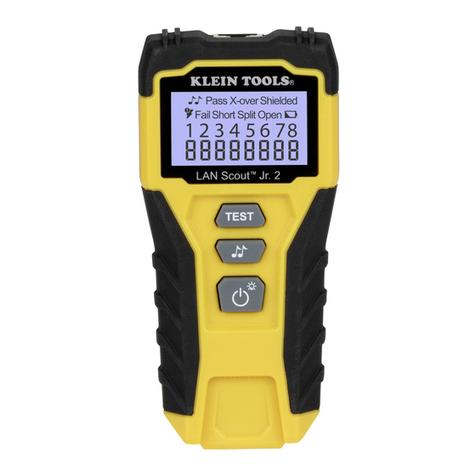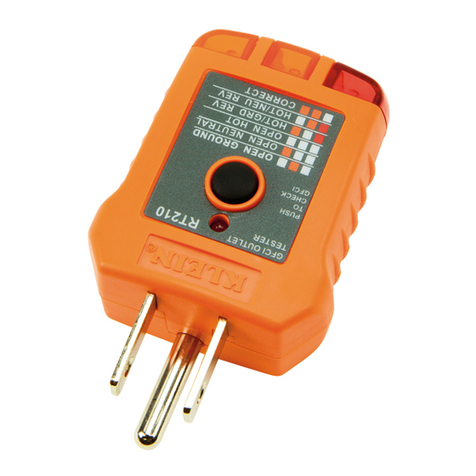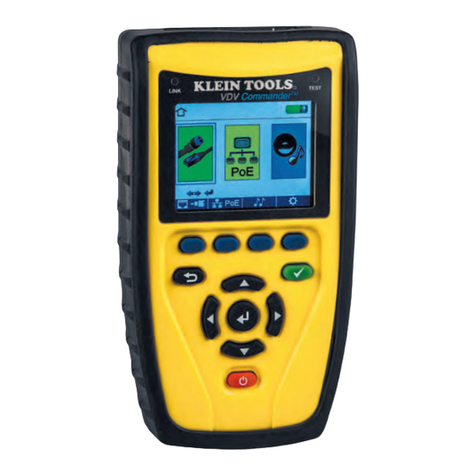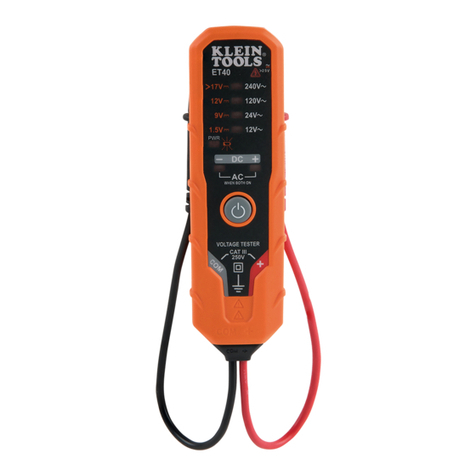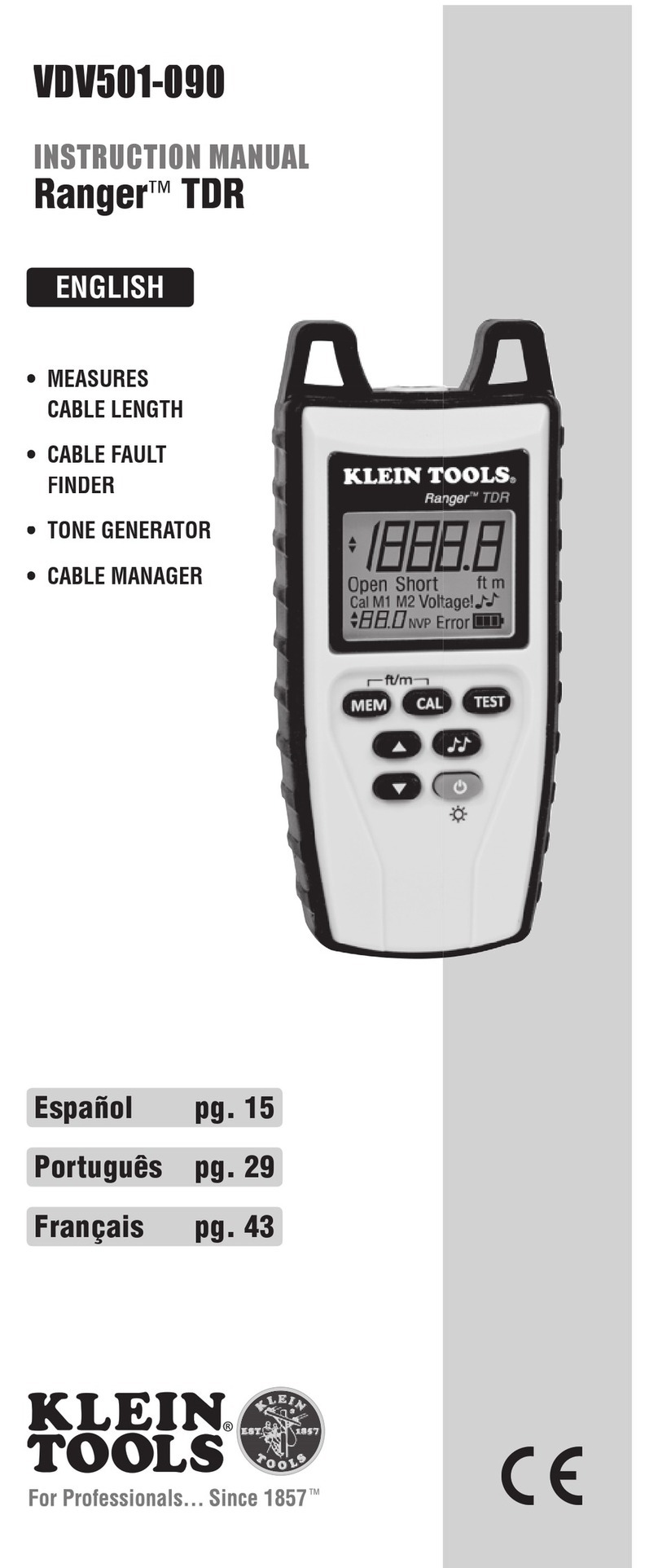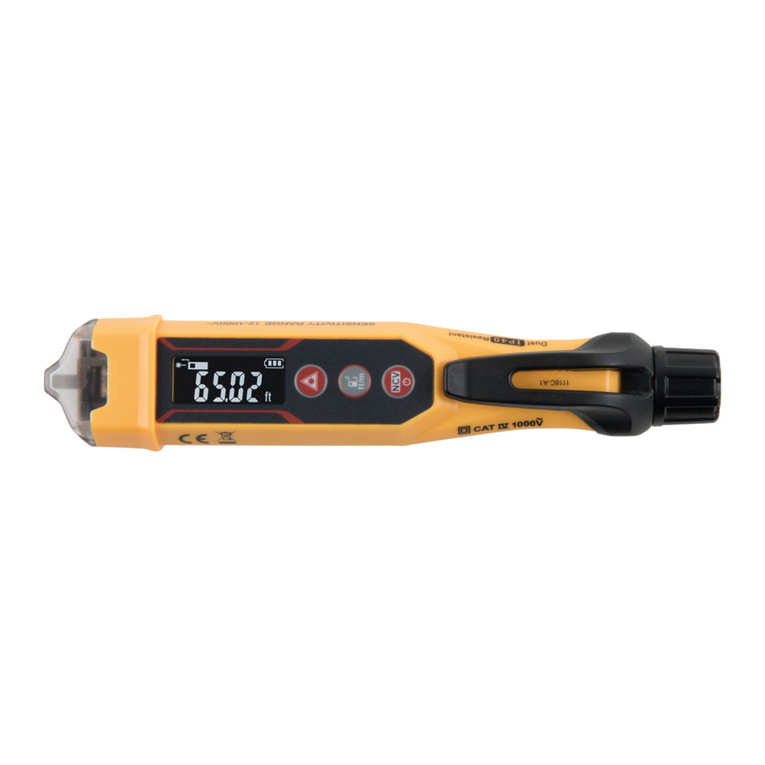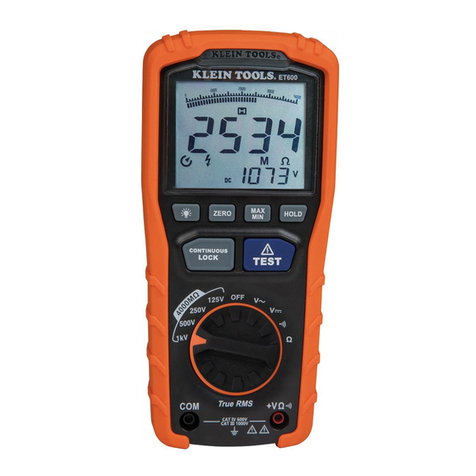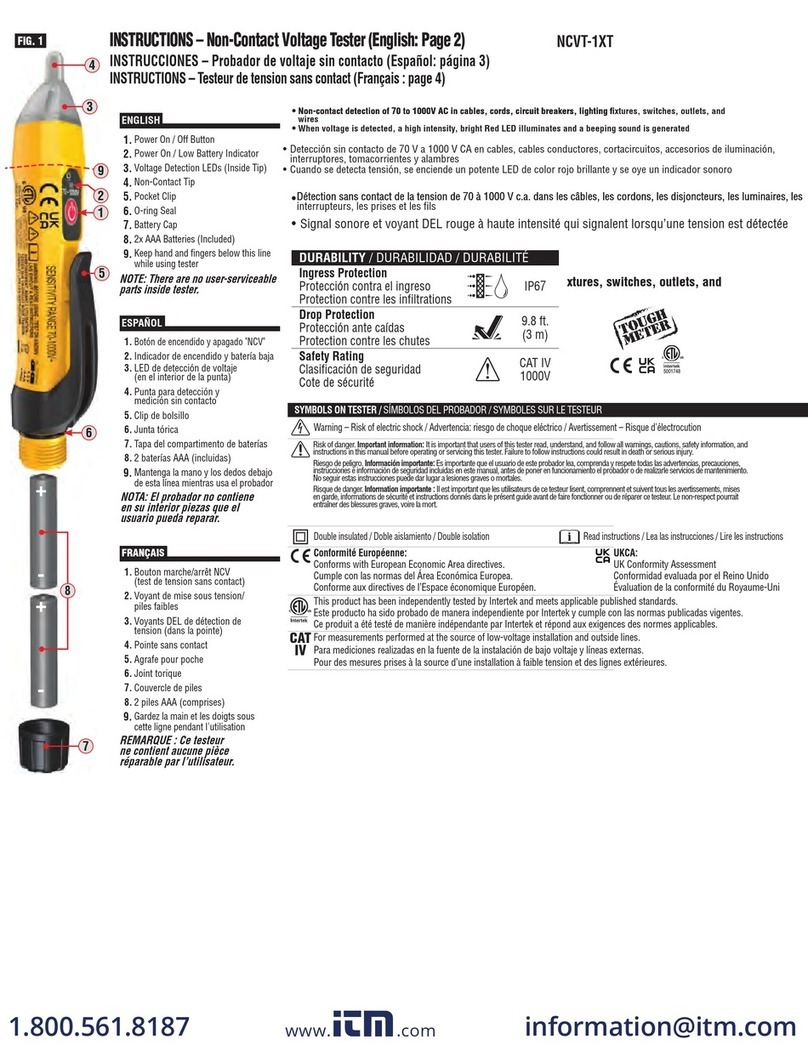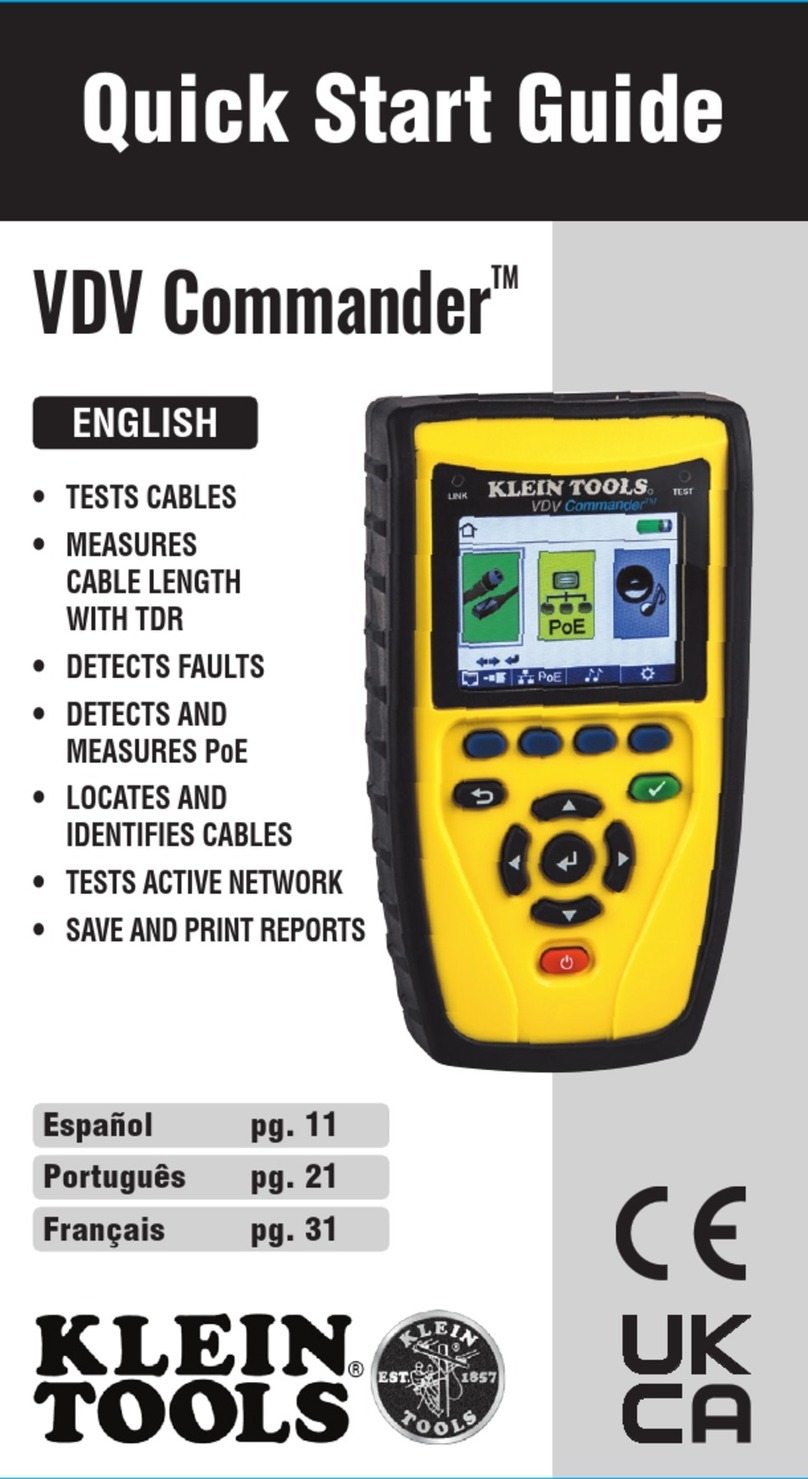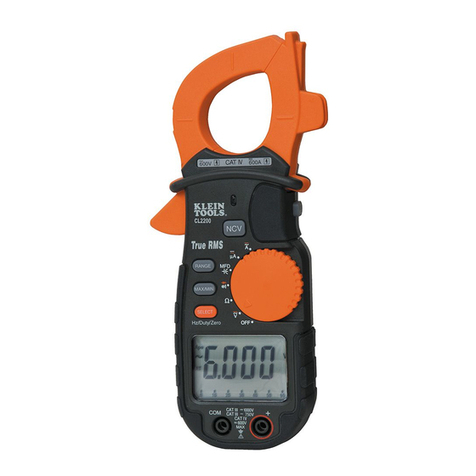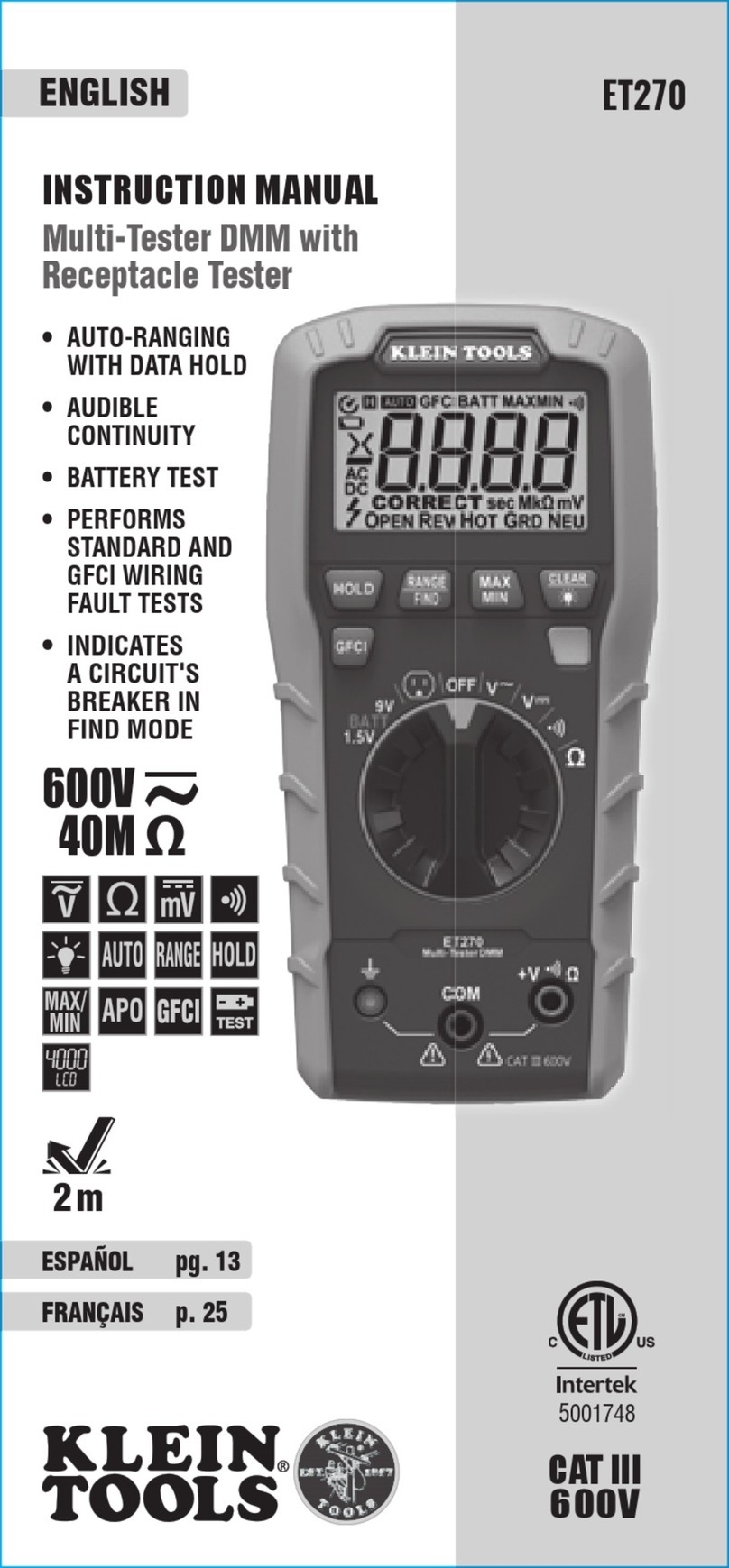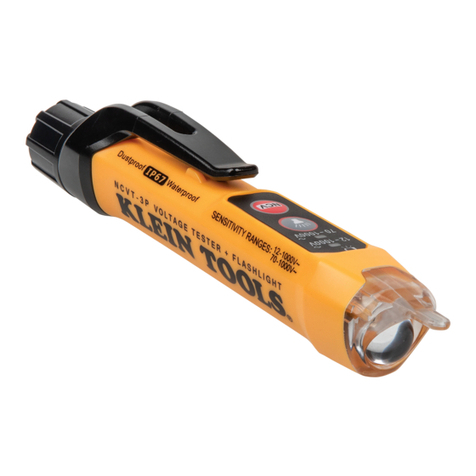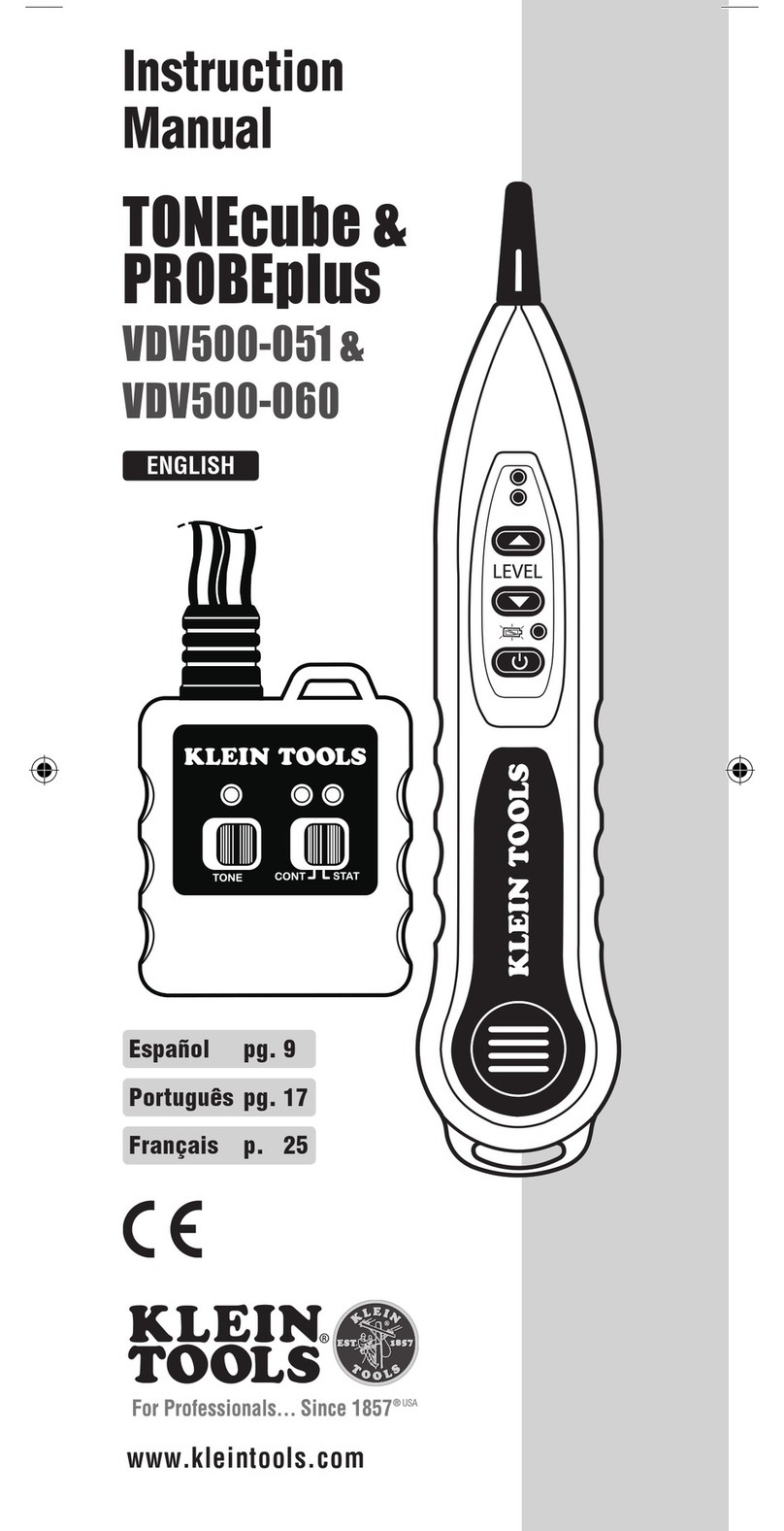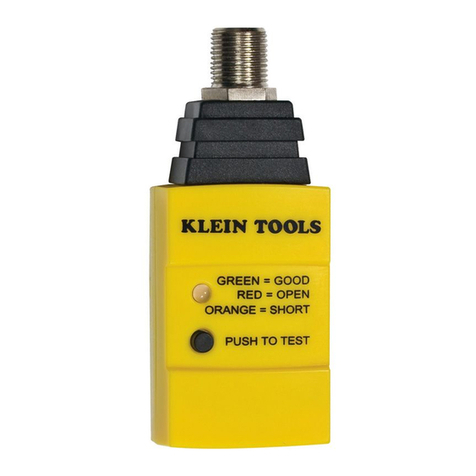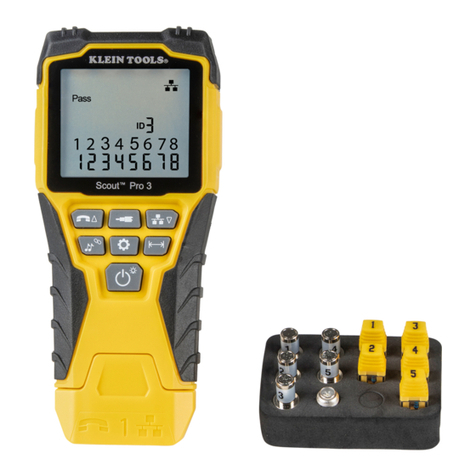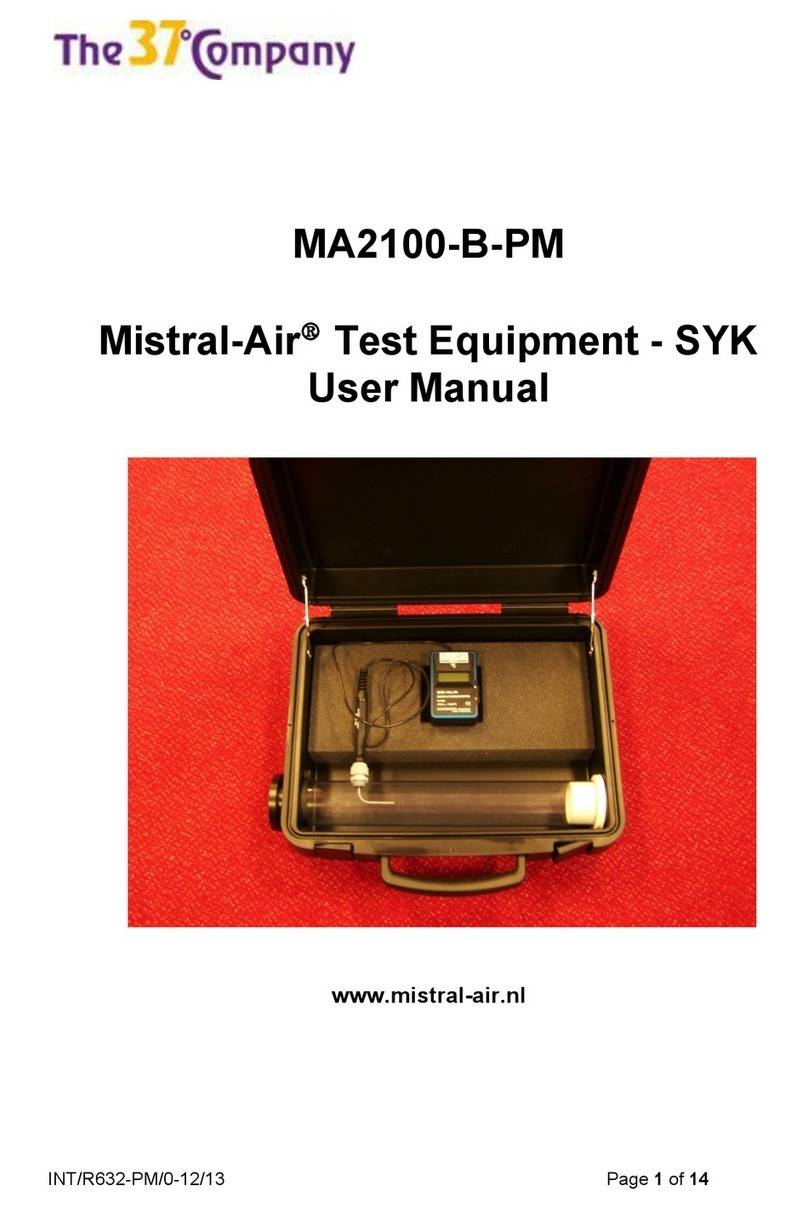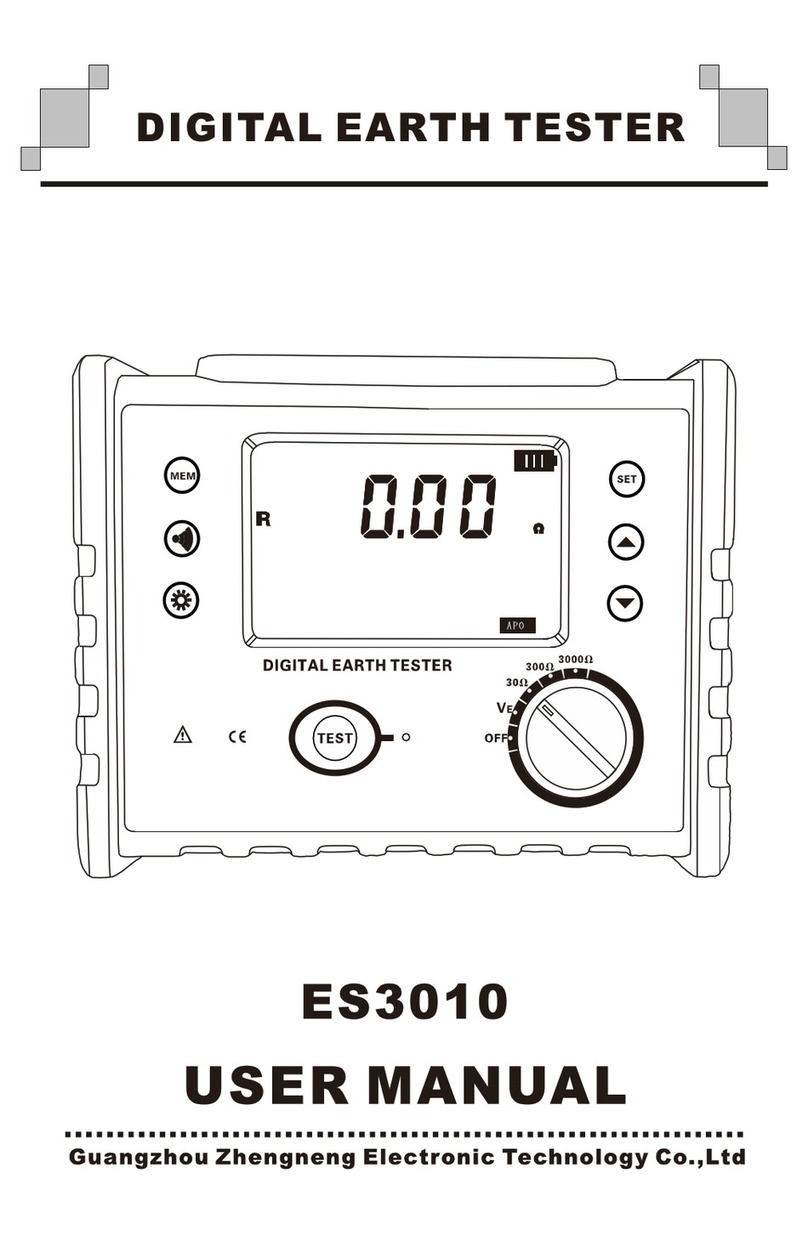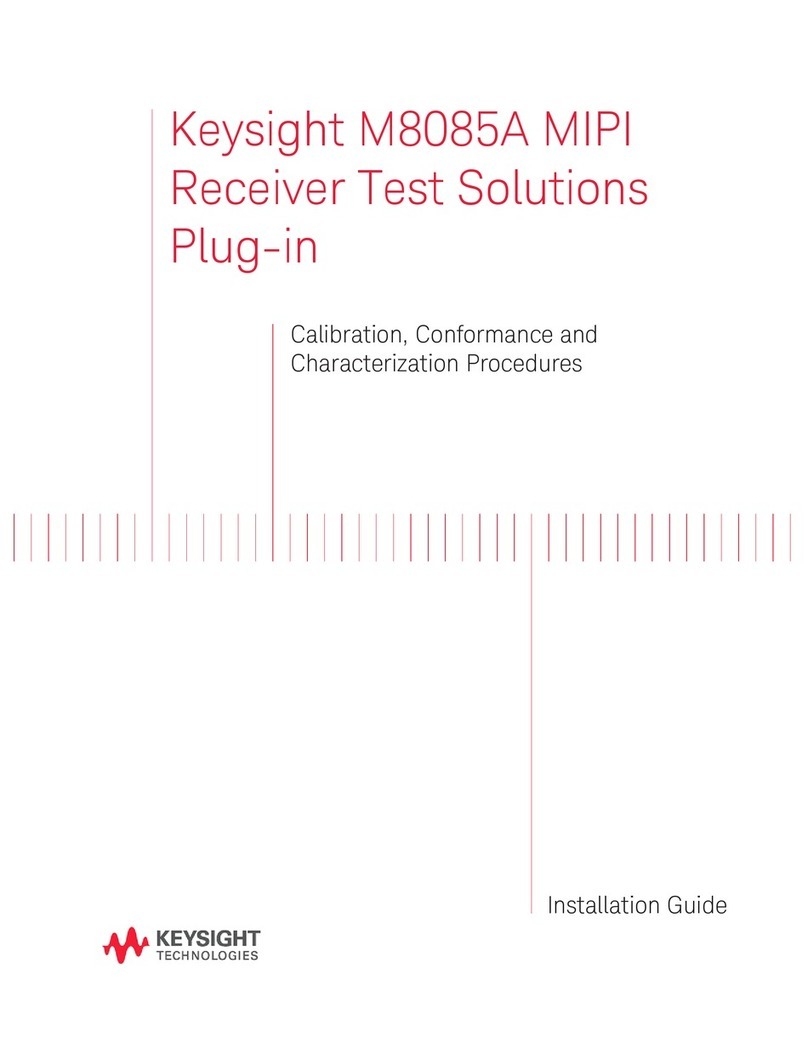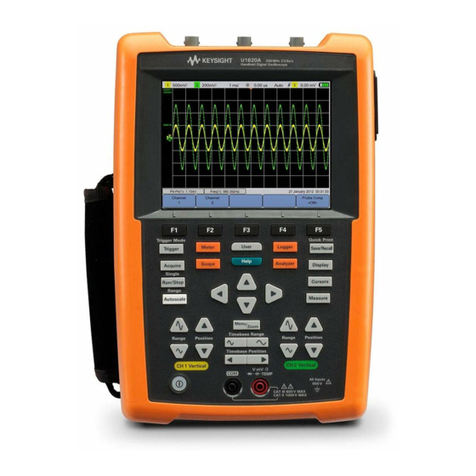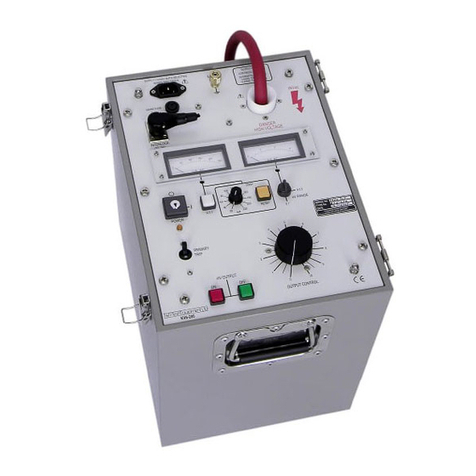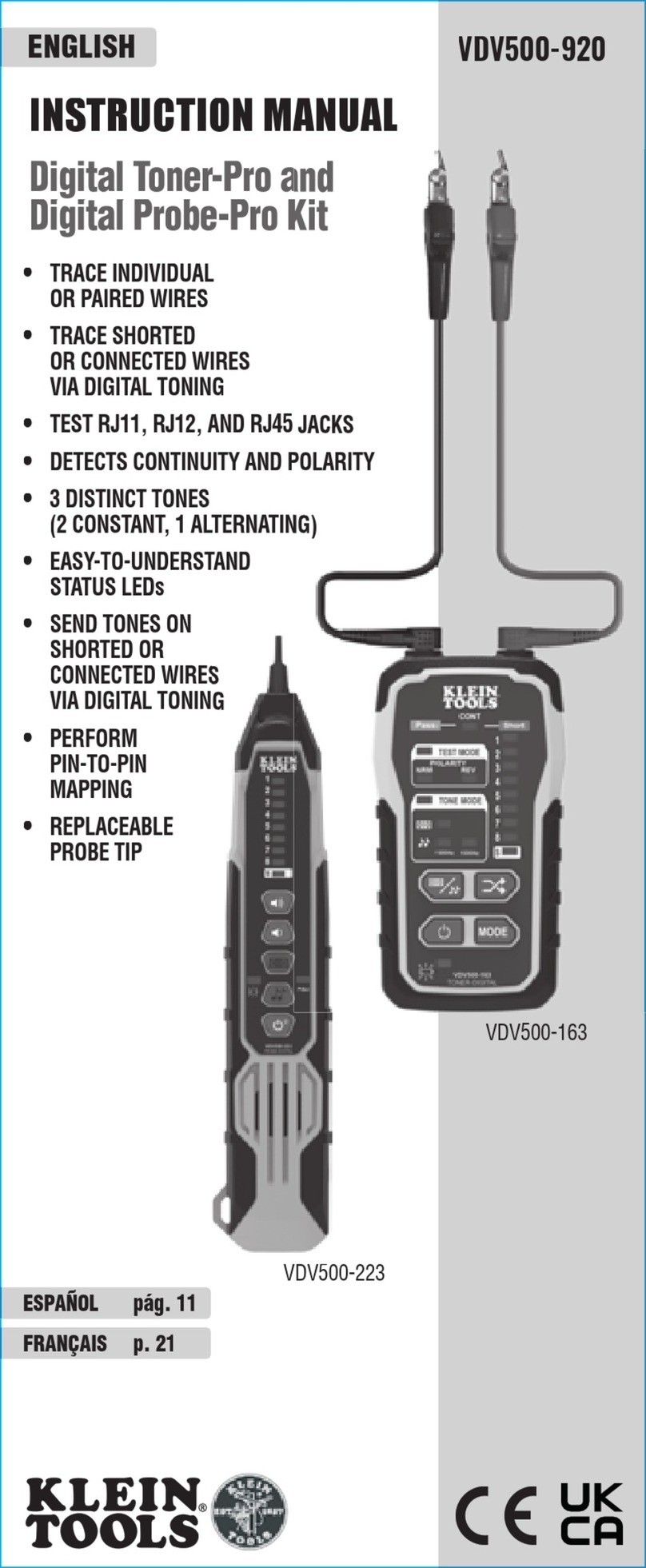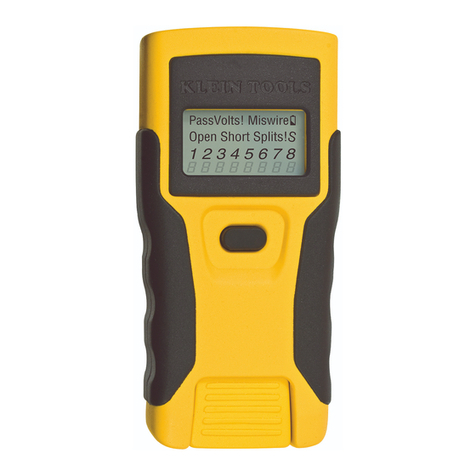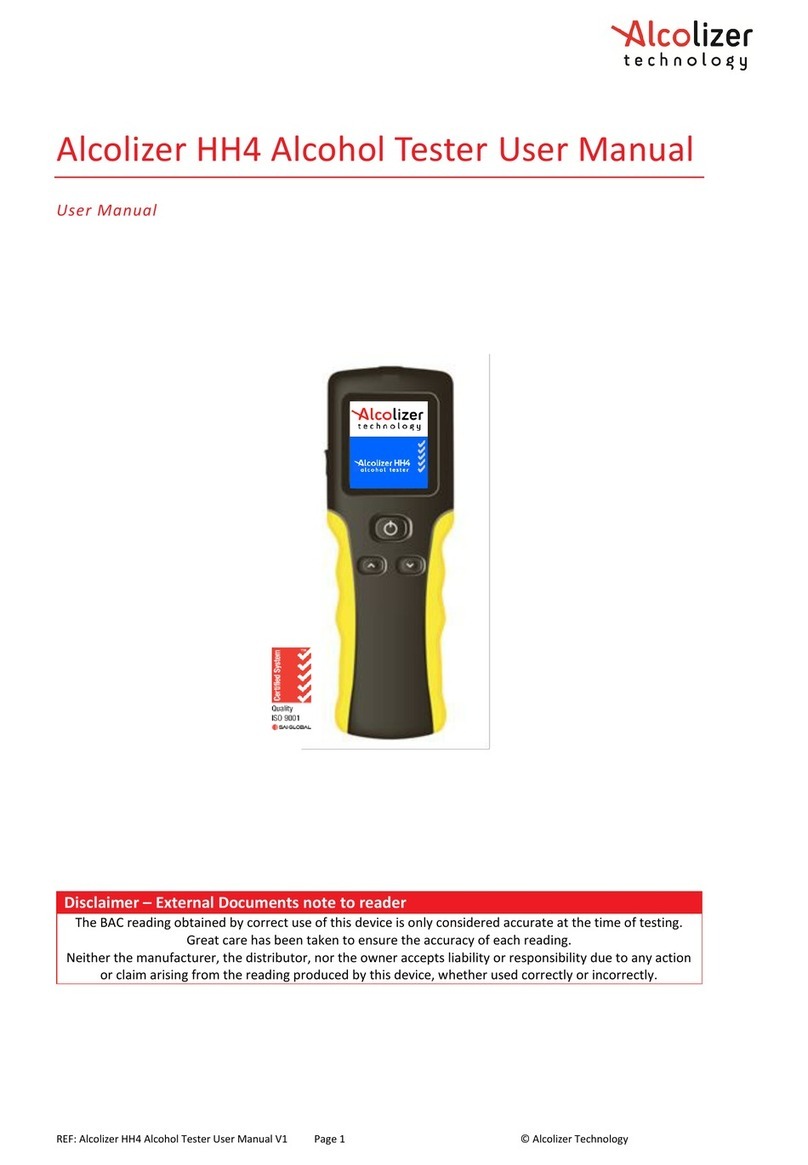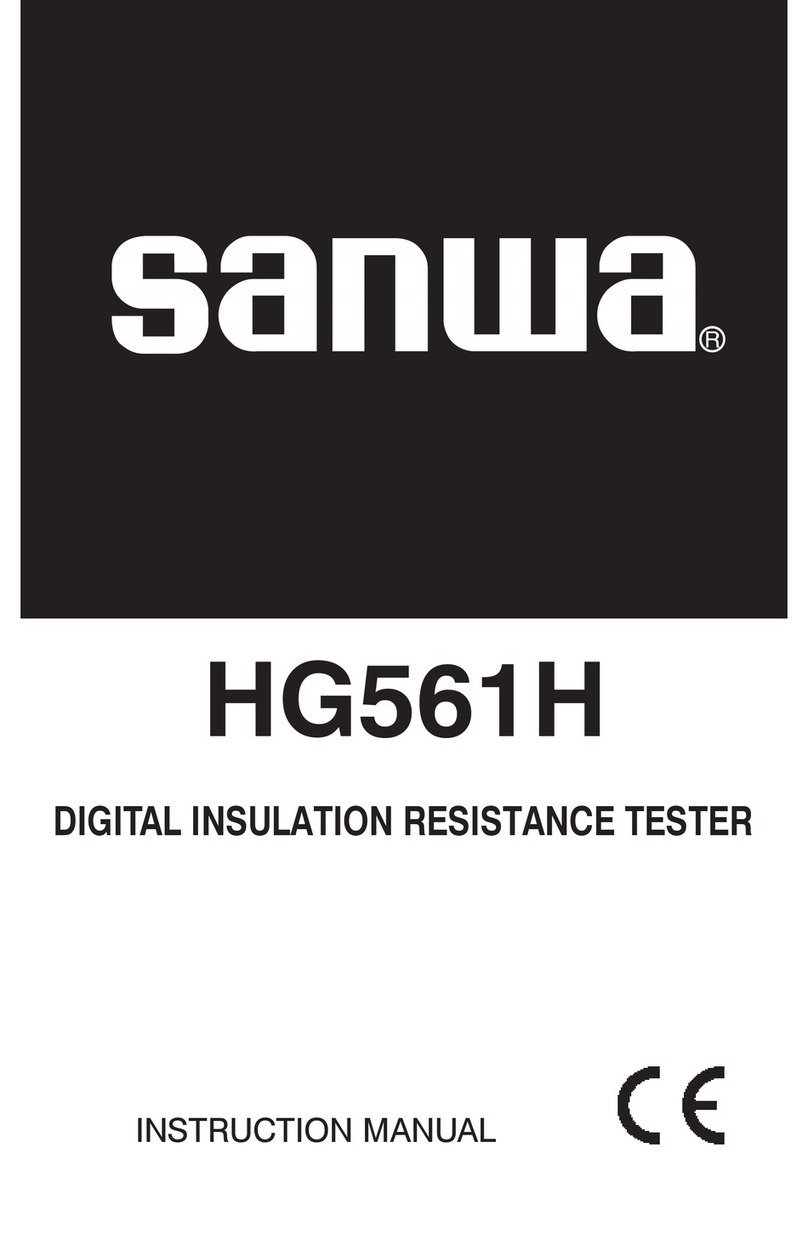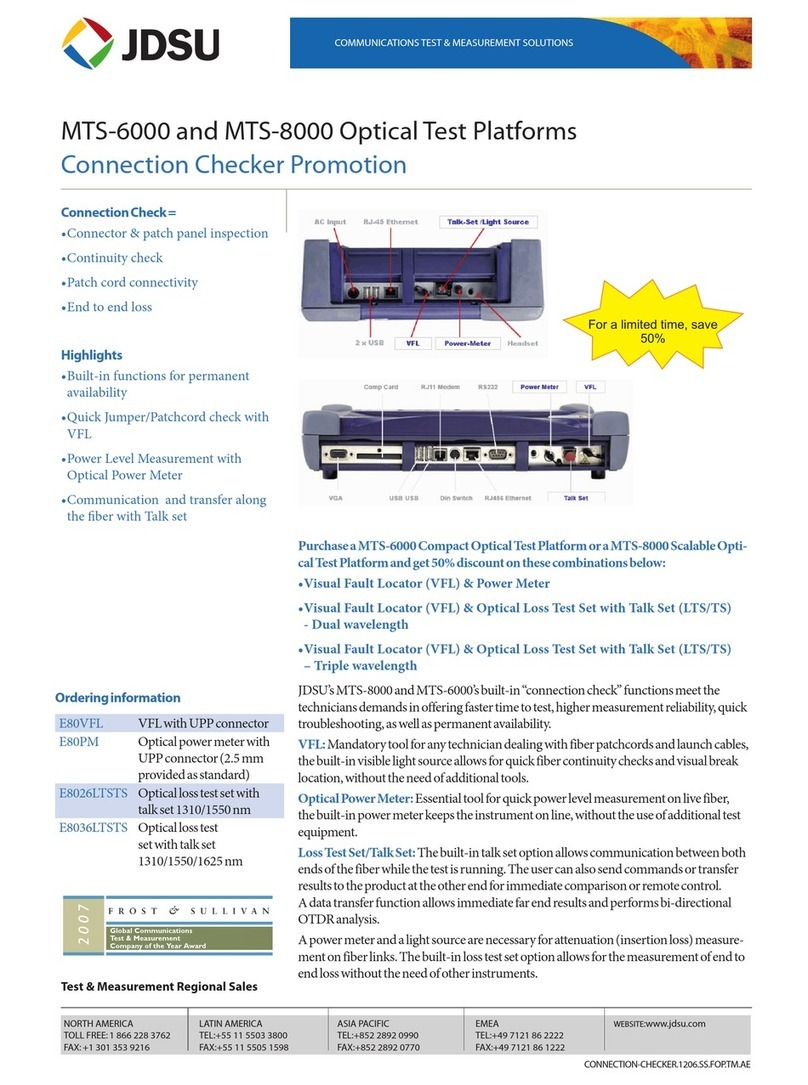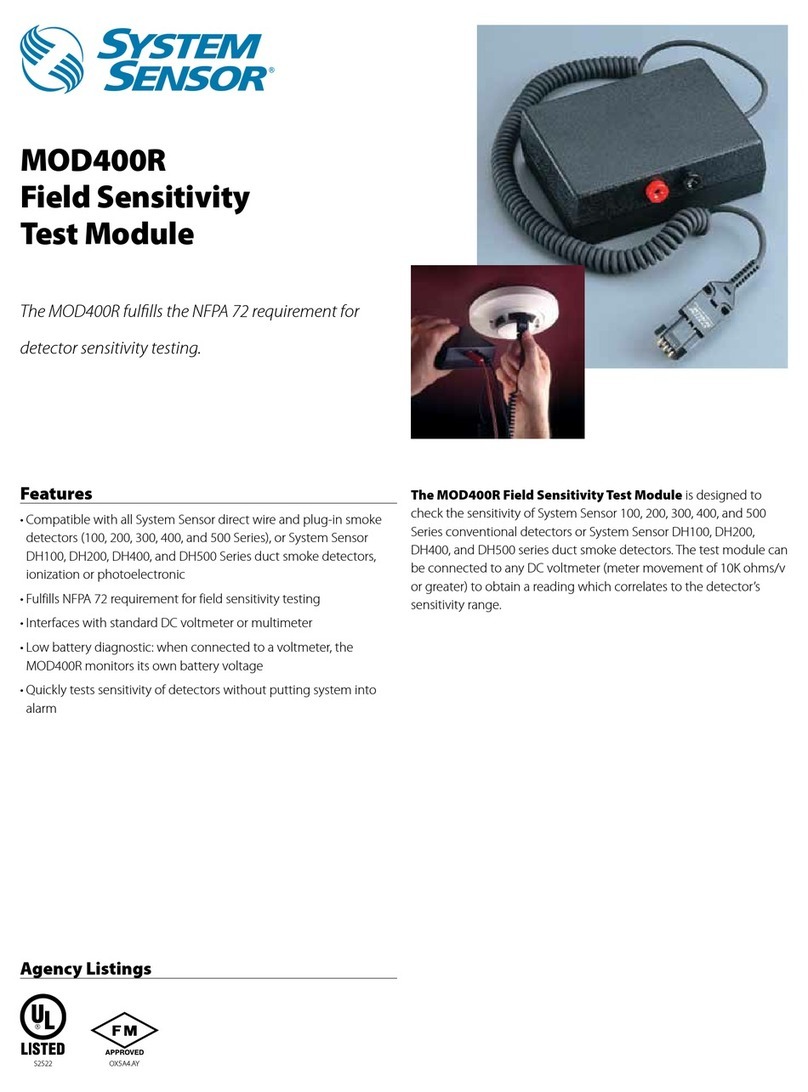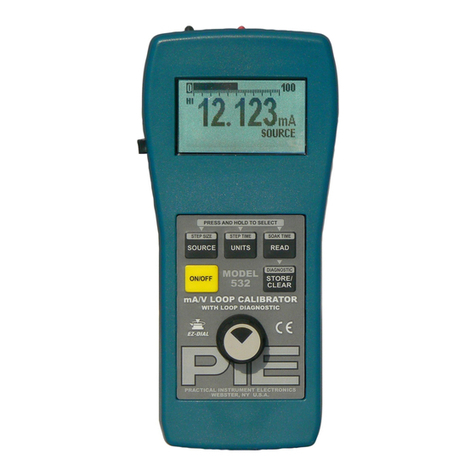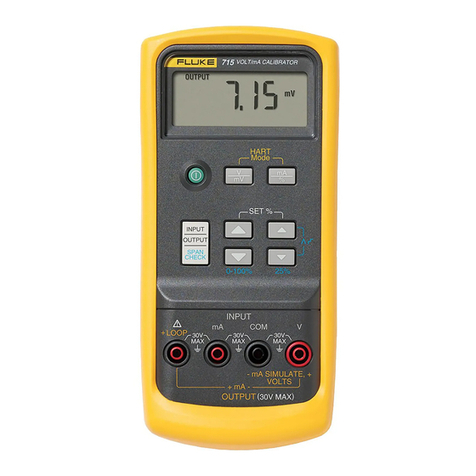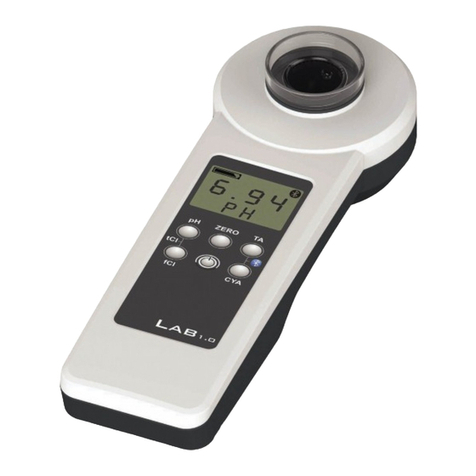ENGLISH
OPERATING INSTRUCTIONS
CHECKING FOR THE PRESENCE OF AC VOLTAGE
1. Press NCV Power On/Off button. After performing a self-test, a green
light will illuminate the tip when no voltage is detected.
2. Prior to use, test on a known live circuit to verify tester functionality.
3. Place tip of the tester
5
near AC voltage. If voltage is present, the unit
will emit audible beeps and the LEDs in the tip
4
will illuminate:
Mode Power-On
LED Color 12 to 70V AC >70 to 1000V AC
Mode 1
70 – 1000V Range
Red
No illumination,
no sound Red LED in tip
4
illuminated, continuous
audible beep
Mode 2
12 – 1000V Range
Blue
Blue LED in tip
4
blinking, pulsing
audible beep
Red LED in tip
4
illuminated, continuous
audible beep
NOTE: In Mode 2, the tester is more sensitive to high voltage sources and
electrically noisy environments. It is recommended to set the tester to
operate in Mode 1 when expected voltages are above 70V AC.
SILENT OPERATION
To activate silent operation, power-ON by pressing and holding the NCV
Power-ON button
1
for more than 2 seconds. Power-ON in this manner
each time silent operation is desired.
CLEANING
Be sure tester is turned off and wipe with a clean, dry lint-free cloth.
Do not use abrasive cleaners or solvents.
STORAGE
Remove the batteries when not in use for a prolonged period of time. Do
not expose to high temperatures or humidity. After a period of storage
in extreme conditions exceeding the limits mentioned in the General
Specifications section, allow the tester to return to normal operating
conditions before using.
DISPOSAL /RECYCLE
Do not place equipment and its accessories in the trash. Items must
be properly disposed of in accordance with local regulations. Please
see www.epa.gov/recycle for additional information.
CUSTOMER SERVICE
KLEIN TOOLS, INC.
450 Bond Street, Lincolnshire, IL 60069 1-800-553-4676
MAINTENANCE
BATTERY REPLACEMENT
When the battery is low, the unit will power-on with a blinking red
LED
3
; at this point the NCVT-3P will disable the flashlight functionality
to conserve battery function for voltage detection.
1. Unscrew the battery cap
9
and remove/recycle spent batteries.
2. Install two new AAA batteries. Note proper polarity.
3. Screw battery cap tightly to ensure a tight seal with the O-Ring
8
.
WARNINGS
To ensure safe operation and service of the tester, follow these instructions.
Failure to observe these warnings can result in severe injury or death.
• Risk of electric shock and burn. Contact with live circuits could result in death or serious injury.
• Use caution with voltages above 25V AC as a shock hazard may exist.
• A blinking LED or a steadily illuminated LED in the tip and audible beeps indicate presence of voltage. If
no indication, voltage could still be present.
• Before and after each use, verify operation by testing a known working circuit that is within the rating
of this unit.
• Never assume neutral or ground wires are de-energized. Neutrals in multi-wire branch circuits may be
energized when disconnected and must be retested before handling.
• The tester WILL NOT detect voltage if:
• The wire is shielded.
• The operator is not grounded or is otherwise isolated from an effective earth ground.
• The voltage is DC.
• The tester MAY NOT detect voltage if:
• The user is not holding the tester.
• The user is insulated from the tester with a glove or other materials.
• The wire is partially buried or in a grounded metal conduit.
• The tester is at a distance from the voltage source.
• The field created by the voltage source is being blocked, dampened, or otherwise interfered with.
• The frequency of the voltage is not a perfect sine wave between 50 and 500Hz.
• The tester is outside of operating conditions (listed in Specifications section).
• Operation may be affected by differences in socket design and insulation thickness and type; tester may
not be compatible with some types of standard or tamper resistant (TR) electrical outlets.
• In bright light conditions, the LED visual indicators will be less visible.
• When powered-ON, one of the “power-ON” LED’s will be illuminated, and a green light will illuminate
the tip.
DO NOT USE TESTER UNLESS ONE OF THE “POWER-ON” LEDsIS ILLUMINATED.
• Do not use if tester appears damaged or is not operating properly. If in doubt, replace the tester.
• Do not apply more than the rated voltage as marked on the tester (1000V).
• Do not apply to uninsulated hazardous live conductors.
• Detection above 70V AC in Mode 1, or above 12V AC in Mode 2 is specified under "normal" conditions
as detailed below. The tester may detect at a different threshold at different conditions, or may not
detect at all unless:
• The tip of the tester is within 0.25" (6 mm) of an AC voltage source radiating unimpeded.
• The user is holding the body of the tester with his or her bare hand.
• The user is standing on or connected to earth ground.
• The air humidity is nominal (50% relative humidity – non-condensing).
• The tester is held still.
• Always wear approved eye protection.
• Comply with local and national safety requirements.
• If this product is used in a manner not specified by the manufacturer, protection provided by the
product may be affected.
OPERATING INSTRUCTIONS
SELECTING VOLTAGE TESTING MODE
NCVT-3P can detect voltage in two distinct modes, defined by the voltage ranges
to which the tester is sensitive. Mode 1 detects 70 to 1000V AC, Mode 2 detects
12 to 1000V AC.
With the tester powered-ON, successive presses of the NCV
Power-ON button
1
will switch the tester between modes 1 and 2. The Power-ON
indicator LED’s
3
will indicate the currently active mode.
The tester will power-
ON in the mode that was most recently used.
CAUTION
• DO NOT attempt to repair this tester. It contains no serviceable parts.
• DO NOT expose tester to extremes in temperature or high humidity.
FUNCTION BUTTONS
NCV POWER ON/OFF BUTTON
1
To activate the Non-Contact Voltage Testing feature, press and release
the NCV Power button
1
. All LEDs will illuminate during self-test, then
the tester will emit a single beep, one of the Power ON LEDs
3
will
illuminate
3
indicating which NCVT mode is active (see OPERATING
INSTRUCTIONS), and a green light will illuminate in the tip
4
. To power-
OFF the tester, press and hold the NCV Power button
1
. The tester will
emit a double beep.
NOTE: The tester will automatically power-OFF following 4 minutes of
inactivity to conserve battery life.
FLASHLIGHT ON/OFF BUTTON
2
Press the Flashlight Power Button
2
to turn on the flashlight. Press
again to turn off the flashlight.
NOTE: The flashlight will automatically power-off after 20 minutes to
conserve battery life
GENERAL SPECIFICATIONS
The Klein Tools NCVT-3P is a dual-range non-contact voltage tester (NCVT)
with flashlight. It can detect voltage from 70 to 1000V AC (Mode 1), or
from 12 to 1000V AC (Mode 2) for low voltage and higher sensitivity.
• Environment: Indoor or outdoor
• Measurement Range: Mode 1: 70 to 1000V AC
Mode 2: 12 to 1000V AC
• Frequency Range: 50 to 500 Hz
• Batteries: 2x AAA 1.5V Alkaline
• Operating and Storage Altitude: Up to 6562 ft. (2000 m)
• Operating and Storage Temp: 14°to 122°F (-10°to 50°C)
• Relative Humidity: <95% non-condensing
• Dimensions: 6.0" x 0.96" x 1.16" (152 x 24 x 29 mm)
• Weight: 2.5 oz. (72 g) including batteries
• Pollution degree: 2
• Safety Rating: CAT IV 1000V AC
• Drop Protection: 6.6 ft. (2 m)
• Ingress Protection: IP67
• Standards: EN61010-1:2010, EN61010-2-030:2010,
EN61326-1:2013, EN61326-2-2:2013.
Conforms to UL STD. 61010-1, 61010-2-030
Certied to CSA STD. C22.2 No. 61010-1, 61010-2-030.
Specifications subject to change.
5001748




